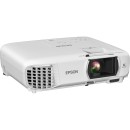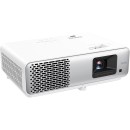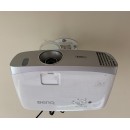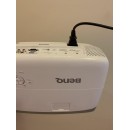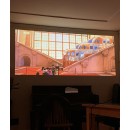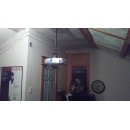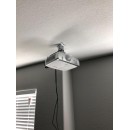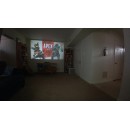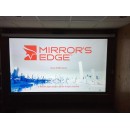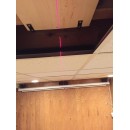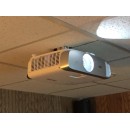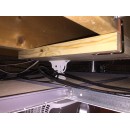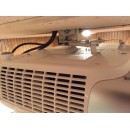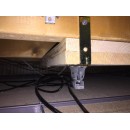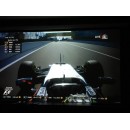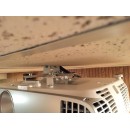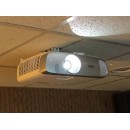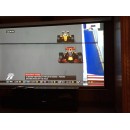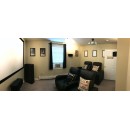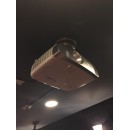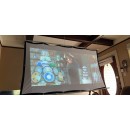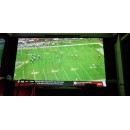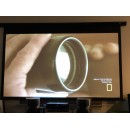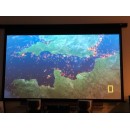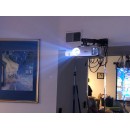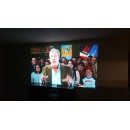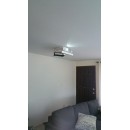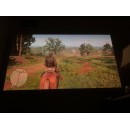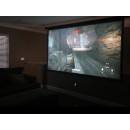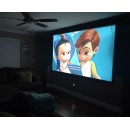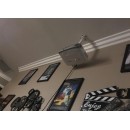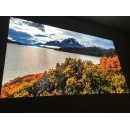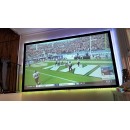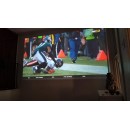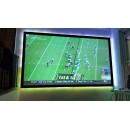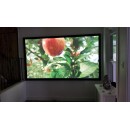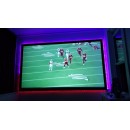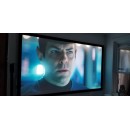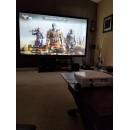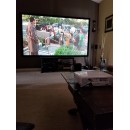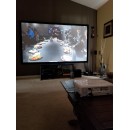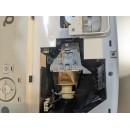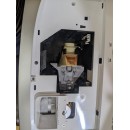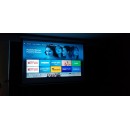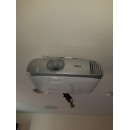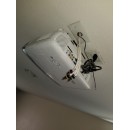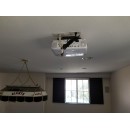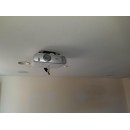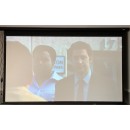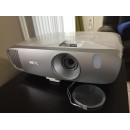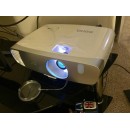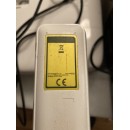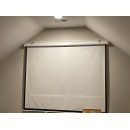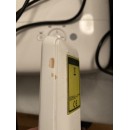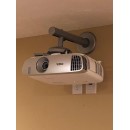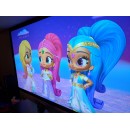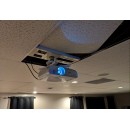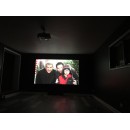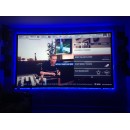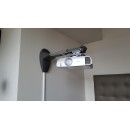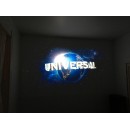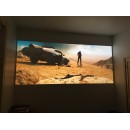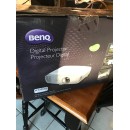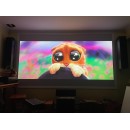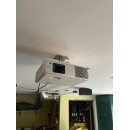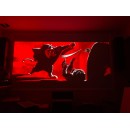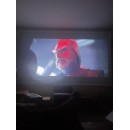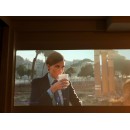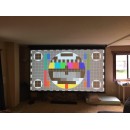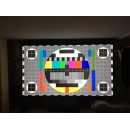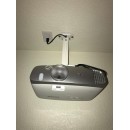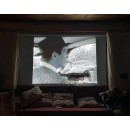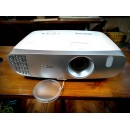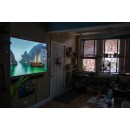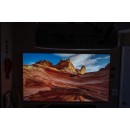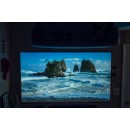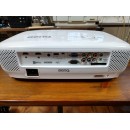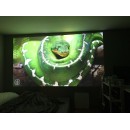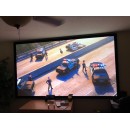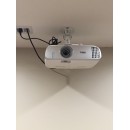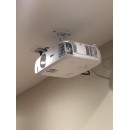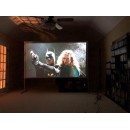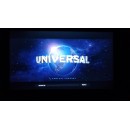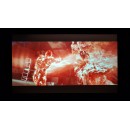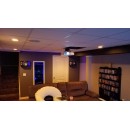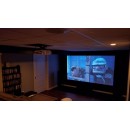Epson Home Cinema 1080 vs BenQ HT2060: Which Projector is Right for You?
The Epson Home Cinema 1080 3LCD Projector and the BenQ HT2060 Home Theater Projector are both designed to enhance your home entertainment experience, yet they cater to slightly different needs and preferences. The Epson Home Cinema 1080 employs 3LCD technology, which is known for producing vibrant colors and a well-balanced color spectrum without the risk of a rainbow effect. This projector delivers a Full HD 1080p resolution, making it ideal for watching movies and gaming with crisp clarity. It also boasts a high lumens rating, ensuring bright and vivid images even in rooms with some ambient light.
On the other hand, the BenQ HT2060 Home Theater Projector is celebrated for its DLP technology, which provides sharp and detailed images, often preferred by those who appreciate a cinematic experience. It also supports Full HD 1080p resolution, ensuring you get detailed and immersive visuals. One of the standout features of the BenQ HT2060 is its high contrast ratio, which means it can produce deeper blacks and more defined dark scenes, enhancing the viewing experience for movies with intricate shadow details.
When comparing the brightness levels, the Epson Home Cinema 1080 tends to perform better in brighter environments due to its higher lumen output, which means it can project clearer images in rooms where light control is challenging. Conversely, the BenQ HT2060 excels in creating an authentic theater-like atmosphere in controlled lighting conditions, owing to its superior contrast capabilities. Both projectors offer flexible installation options, but the Epson model often includes more user-friendly features like lens shift and keystone correction, allowing for easier setup.
In conclusion, your choice between the Epson Home Cinema 1080 and the BenQ HT2060 will largely depend on your specific needs and viewing environment. If you require a projector that performs well in various lighting conditions and provides vibrant colors, the Epson Home Cinema 1080 might be the better fit. However, if you are looking for a true cinematic experience with excellent contrast and sharpness, especially in a darkened room, the BenQ HT2060 could be the preferred option. Both projectors offer high-quality visuals, but their strengths cater to different aspects of home entertainment.
In the following sections, we will delve into a detailed comparison of the Epson Home Cinema 1080 3LCD Projector and the BenQ HT2060 Home Theater Projector. This comprehensive analysis will cover their specifications, highlighting the unique advantages and acknowledging any potential disadvantages of each model. By examining these aspects, we aim to provide you with the crucial information needed to make the best choice for your home theater setup.
Detailed Specifications and Performance Comparison
| User Rating Based on Analysis of Reviews | |
|---|---|
|
Show More |
| Pros: | |
|---|---|
|
|
| Cons: | |
|---|---|
|
|
| Key Specs | |
|---|---|
| Display System | |
| 3-Chip Polysilicon TFT LCD | DLP |
| Native Resolution | |
| 1920 x 1080 | 1920 x 1080 |
| Maximum Brightness | |
| White: 3400 Lumens (ISO) Color: 3400 Lumens |
2300 Lumens (ANSI) |
| Throw Ratio | |
| 1.02 to 1.23:1 | 1.15 to 1.5:1 (100" Screen Size @ 8.2' / 2.5 m) |
| Projection Size | |
| 30 to 300" / 76.2 to 762.0 cm | 100 to 150" / 2.5 to 3.8 m |
| HDR Support | |
| , | Yes, HDR10/Hybrid Log Gamma |
| Inputs/Outputs | |
| 2x HDMI Audio, Video Input 1x DE-15/DB-15 (VGA) Input 1x RCA (Composite) Video Input 1x 2RCA Audio Input 1x 1/8" / 3.5 mm Mini Audio Output 1x USB-A 2.0 Data Input 1x USB-B 2.0 Data Input |
2x HDMI 2.0b Audio, Video Input 1x USB-A 2.0 Power, Service Input/Output 1x DE-9/DB-9 (RS-232) Control Input 1x 1/8" / 3.5 mm Mini Audio Input 1x 1/8" / 3.5 mm Mini Audio Output 1x TOSLINK (Optical) Audio Output |
| Light Source | |
| Lamp (1 x UHE) | LED |
The Epson Home Cinema 1080 3LCD Projector utilizes a 3-Chip Polysilicon TFT LCD display system with a native resolution of 1920 x 1080. It boasts a maximum brightness of 3400 Lumens, providing vibrant images in various lighting conditions. The projector has a throw ratio of 1.02 to 1.23:1, accommodating a projection size ranging from 30 to 300 inches. However, it does not support HDR, which may limit its performance with high dynamic range content. The input/output options include 2x HDMI, 1x VGA, and several audio inputs/outputs, making it versatile for various connectivity needs. The light source is a lamp (1 x UHE).Show More
On the other hand, the BenQ HT2060 Home Theater Projector employs a DLP display system, also with a native resolution of 1920 x 1080, but it has a lower maximum brightness of 2300 Lumens (ANSI). Its throw ratio ranges from 1.15 to 1.5:1, making it suitable for a smaller projection size of 100 to 150 inches at a typical viewing distance. Notably, this projector supports HDR with HDR10 and Hybrid Log Gamma, enhancing the viewing experience with better color and contrast. The connectivity options include 2x HDMI 2.0b and various audio input/output ports, including a TOSLINK optical audio output. It utilizes an LED light source, which generally offers a longer lifespan and lower maintenance needs compared to traditional lamps.
In summary, the Epson Home Cinema 1080 excels in brightness and larger projection capabilities, while the BenQ HT2060 stands out with its HDR support and LED technology. Both projectors provide a native 1080p resolution, but their distinct features cater to different preferences and viewing environments.
| Image Display | |
|---|---|
| Display System | |
| 3-Chip Polysilicon TFT LCD | DLP |
| Native Resolution | |
| 1920 x 1080 | 1920 x 1080 |
| Maximum Brightness | |
| White: 3400 Lumens (ISO) Color: 3400 Lumens |
2300 Lumens (ANSI) |
| Aspect Ratio | |
| Native: 16:9 Supported: 16:10 Supported: 4:3 |
Native: 16:9 |
| Dynamic Contrast Ratio | |
| 16,000:1 | 500,000:1 |
| Color Depth | |
| 10-Bit (1.07 Billion Colors) | 10-Bit (1.07 Billion Colors) |
The Epson Home Cinema 1080 3LCD Projector utilizes a 3-Chip Polysilicon TFT LCD display system, offering a native resolution of 1920 x 1080. It boasts a maximum brightness of 3400 Lumens for both white and color output, making it suitable for various lighting conditions. The projector supports an aspect ratio of 16:9 natively, with additional support for 16:10 and 4:3. It features a dynamic contrast ratio of 16,000:1 and a color depth of 10-Bit, allowing for a rich representation of colors up to 1.07 Billion Colors.Show More
On the other hand, the BenQ HT2060 Home Theater Projector employs a DLP display system with the same native resolution of 1920 x 1080 but has a maximum brightness of 2300 Lumens (ANSI). This projector also supports a native aspect ratio of 16:9 and offers an impressive dynamic contrast ratio of 500,000:1, which enhances the depth and detail in darker scenes. The BenQ HT2060 supports a wider range of resolutions, from 640 x 480 to 3840 x 2160, while maintaining a color depth of 10-Bit with the same ability to display 1.07 Billion Colors.
In terms of functionality, the Epson projector excels in brightness, making it more versatile for various environments, while the BenQ projector offers superior contrast, which can lead to a more immersive viewing experience, particularly in darker settings. Both projectors share similar color depth capabilities, ensuring vibrant and rich color representations, but their different technologies (LCD vs. DLP) may appeal to different user preferences based on viewing habits and environments.
| Lens | |
|---|---|
| Includes Lens | |
| Yes | Yes |
| Aperture | |
| f/1.58 to 1.7 | f/2.59 to 2.87 |
| Focal Length | |
| 14.06 to 16.82mm | 16.88 to 21.88mm |
| Optical Zoom | |
| Manual: 1.2x | 1.3x |
| Throw Ratio | |
| 1.02 to 1.23:1 | 1.15 to 1.5:1 (100" Screen Size @ 8.2' / 2.5 m) |
| Projection Size | |
| 30 to 300" / 76.2 to 762.0 cm | 100 to 150" / 2.5 to 3.8 m |
The Epson Home Cinema 1080 3LCD Projector features a manual focus and a throw ratio of 1.02 to 1.23:1. This allows for a versatile projection size ranging from 30 to 300 inches, making it suitable for various viewing environments. The projector comes equipped with a lens that has an aperture of f/1.58 to 1.7 and a focal length of 14.06 to 16.82mm. Its optical zoom capability is manual and offers a 1.2x zoom, providing additional flexibility in placement.Show More
In contrast, the BenQ HT2060 Home Theater Projector has a slightly different set of specifications. It features a lens with a f/2.59 to 2.87 aperture and a focal length of 16.88 to 21.88mm. The projector supports a lens shift of +10% vertically, which can enhance installation options. Its optical zoom is 1.3x, allowing for a broader adjustment range. The throw distance for this model is between 8.35 - 16.3 feet, with a throw ratio of 1.15 to 1.5:1, specifically designed for projecting a 100" screen size at 8.2 feet. The BenQ HT2060 is optimized for projection sizes of 100 to 150 inches.
Overall, the Epson projector offers a wider projection size capability, making it more versatile for different screen sizes. However, the BenQ model provides enhanced lens shift and a slightly better optical zoom, which may facilitate easier installation and positioning. Each projector has its unique benefits based on the intended use and installation environment, making them suitable choices for home theater enthusiasts.
| Features | |
|---|---|
| Keystone Correction | |
| Auto to Vertical: ± 30° Manual to Horizontal: ± 30° |
Auto to Vertical: ± 40° Auto to Horizontal: ± 40° |
| HDR Support | |
| , | Yes, HDR10/Hybrid Log Gamma |
| Ceiling Mountable | |
| Yes | Yes |
| Built-In Speaker | |
| Yes | Yes (Stereo) |
The Epson Home Cinema 1080 3LCD Projector features a keystone correction capability that includes auto vertical correction up to ±30° and manual horizontal correction also up to ±30°. This allows for flexibility in projector placement, making it easier to achieve a properly aligned image. However, it does not support HDR, which may limit the dynamic range and color depth compared to other models. Additionally, it is ceiling mountable and supports rear screen projection, making it versatile for various room configurations. The projector also includes a built-in speaker, providing basic audio output for users.Show More
In contrast, the BenQ HT2060 Home Theater Projector offers a more advanced keystone correction system, featuring auto vertical and horizontal correction up to ±40°. This enhanced flexibility allows for greater precision in image alignment, which can be beneficial in challenging installation scenarios. Notably, the BenQ model supports HDR10/Hybrid Log Gamma, enhancing the viewing experience with improved color and contrast. Like the Epson, the BenQ projector is also ceiling mountable and comes with a built-in stereo speaker that boasts a 10 W speaker power, providing richer sound quality for home theater setups.
Overall, while both projectors offer ceiling mounting and built-in speakers, the BenQ HT2060 stands out with its superior keystone correction, HDR support, and more powerful audio capabilities. The Epson Home Cinema 1080, while capable, may appeal more to users who do not require HDR and prefer simpler setup options.
| Input/Output Connectors | |
|---|---|
| Inputs/Outputs | |
| 2x HDMI Audio, Video Input 1x DE-15/DB-15 (VGA) Input 1x RCA (Composite) Video Input 1x 2RCA Audio Input 1x 1/8" / 3.5 mm Mini Audio Output 1x USB-A 2.0 Data Input 1x USB-B 2.0 Data Input |
2x HDMI 2.0b Audio, Video Input 1x USB-A 2.0 Power, Service Input/Output 1x DE-9/DB-9 (RS-232) Control Input 1x 1/8" / 3.5 mm Mini Audio Input 1x 1/8" / 3.5 mm Mini Audio Output 1x TOSLINK (Optical) Audio Output |
The Epson Home Cinema 1080 3LCD Projector offers a diverse range of connectivity options including 2x HDMI for both audio and video input, along with a DE-15/DB-15 (VGA) input and RCA composite video input. It also features a 2RCA audio input and a 1/8" / 3.5 mm mini audio output. For data connection, it includes 1x USB-A 2.0 and 1x USB-B 2.0 data inputs, making it versatile for various media sources.Show More
In contrast, the BenQ HT2060 Home Theater Projector also includes 2x HDMI 2.0b inputs for enhanced audio and video capabilities, along with a USB-A 2.0 input for power and service. Additionally, it has a DE-9/DB-9 (RS-232) control input which can be beneficial for integration with home automation systems. The audio setup is comprehensive, featuring a 1/8" / 3.5 mm mini audio input, a 1/8" / 3.5 mm mini audio output, and a TOSLINK (Optical) audio output for high-quality sound transmission.
Moreover, the BenQ HT2060 supports HDCP Version 2.2, which is essential for playing protected content from various sources, ensuring compatibility with modern streaming devices and services. This feature is not explicitly mentioned in the specifications of the Epson Home Cinema 1080, which may limit its compatibility with certain content types.
| Hardware |
|---|
| General | |
|---|---|
| Light Source | |
| Lamp (1 x UHE) | LED |
| Fan Noise | |
| Medium Brightness: 37 dB Low Brightness: 28 dB |
Medium Brightness: 33 dB Low Brightness: 28 dB |
| Input Power | |
| 100 to 240 VAC, 50 / 60 Hz at 1.6 to 3.5 A | 100 to 240 VAC, 50 / 60 Hz |
| Power Consumption | |
| Full Brightness: 345 W Low Brightness: 235 W Standby Mode (Lamp Off): 0.3 W |
Medium Brightness: 220 W Standby Mode (Lamp Off): < 0.5 W |
| Operating Temperature | |
| 41 to 95°F / 5 to 35°C | 32 to 72°F / 0 to 40°C |
| Dimensions (W x H x D) | |
| 11.9 x 3.6 x 9.9" / 30.2 x 9.1 x 25.1 cm (Including Feet) 11.9 x 3.4 x 9.8" / 30.2 x 8.6 x 24.9 cm (Excluding Feet) |
14.4 x 9.6 x 4.6" / 366.0 x 244.0 x 118.0 mm |
| Weight | |
| 6.17 lb / 2.8 kg | 7.9 lb / 3.6 kg |
The Epson Home Cinema 1080 3LCD Projector utilizes a Lamp light source with a power rating of 210 W. Its expected lamp life is impressive, offering 6000 hours at medium brightness and extending up to 12,000 hours at low brightness. In terms of fan noise, it operates at 37 dB in medium brightness and 28 dB at low brightness, which may be noticeable in quieter settings. The projector supports an input power of 100 to 240 VAC and consumes 345 W at full brightness and 235 W in low brightness, while its standby mode consumes only 0.3 W.Show More
On the other hand, the BenQ HT2060 Home Theater Projector features a LED light source that is generally more energy-efficient. It runs at a lower power consumption of 220 W at medium brightness and has a standby mode consumption of less than 0.5 W. The fan noise levels are slightly quieter than the Epson, with 33 dB in medium brightness and 28 dB in low brightness. The operating temperature range for the BenQ is more limited, from 32 to 72°F compared to Epson's 41 to 95°F.
In terms of dimensions, the Epson measures 11.9 x 3.6 x 9.9 inches and weighs 6.17 lb, making it relatively compact and lightweight. The BenQ, however, is larger at 14.4 x 9.6 x 4.6 inches and heavier at 7.9 lb. This difference might influence portability and ease of setup in various environments. Overall, both projectors offer unique advantages—Epson with its longer lamp life and broader operating temperature range, and BenQ with its quieter operation and LED efficiency.
| Packaging Info | |
|---|---|
| Package Weight | |
| 8.245 lb | 11.83 lb |
| Box Dimensions (LxWxH) | |
| 14.7 x 13.7 x 6.2" | 19.3 x 15.3 x 9" |
The Epson Home Cinema 1080 3LCD Projector has a package weight of 8.245 lb, making it relatively lightweight and easy to transport. In terms of dimensions, the box measures 14.7 x 13.7 x 6.2 inches, which offers a compact footprint for storage and setup. This projector is designed for users looking for portability without sacrificing performance.Show More
In contrast, the BenQ HT2060 Home Theater Projector is heavier, with a package weight of 11.83 lb. Its larger box dimensions of 19.3 x 15.3 x 9 inches indicate a more substantial design, which may provide additional features or components. While this projector may not be as portable as the Epson model, it potentially offers enhanced performance suitable for a dedicated home theater environment.
Overall, the decision between the two may come down to the need for portability versus a more robust setup. The Epson Home Cinema 1080 is ideal for users who require a lightweight, compact solution, whereas the BenQ HT2060 may appeal to those looking for a more substantial projector experience in a fixed location.
| Customer Images | |
|---|---|
| Videos | |
|---|---|
|
|
|
